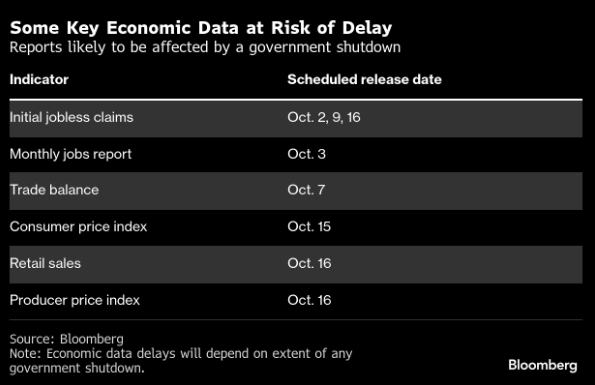The U.S. shutdown halted key economic data, leaving the Fed blind and sparking market volatility over delayed rate cuts.
Sectors & Industries
Table of Contents
The government shutdown that began this week has sent markets lower — not just because of federal furloughs, but because it’s cut off the nation’s economic data pipeline at a critical moment. On Friday, stocks fell sharply after the White House confirmed that the Bureau of Labor Statistics (BLS) and the Bureau of Economic Analysis (BEA) would suspend all major economic releases, including the September jobs report, inflation data, and GDP updates.

This announcement landed just as new data showed that America’s job market is already in trouble. Hiring has slowed across nearly every major sector — from professional services and manufacturing to retail and construction. More than a quarter of job seekers have been unemployed for over six months, and underemployment (people stuck in part-time or low-paying roles) has climbed to its highest level in nearly four years.
Fed Chair Jerome Powell has called this a “low-hire, low-fire” labor market — one where companies are holding onto workers but not adding new ones. He’s warned that if layoffs begin to rise, unemployment could “very quickly” climb further. That’s why the Fed’s focus has shifted toward supporting jobs and easing conditions later this year.
But now, with the shutdown halting BLS and BEA operations, the Fed has no data to confirm what’s happening in real time. With no jobs report, no inflation print, and no spending data, policymakers are effectively flying blind heading into their October 28–29 meeting.
This comes at the worst possible moment. Markets had already priced in multiple rate cuts for late 2025 based on signs of a weakening job market. Without fresh data, the Fed is likely to pause those plans, leaving rates higher for longer — a shift that could trigger a short-term selloff as investors unwind their bets on easy policy.
When the Fed’s blind, investors fall back on instinct:
If the shutdown extends into mid or late October, inflation reports like CPI and PCE will also be delayed, leaving the Fed with little visibility until November. That means rate cuts could slip into 2026, keeping borrowing costs high for businesses, homeowners, and consumers.
Join LevelFields now to be the first to know about events that affect stock prices and uncover unique investment opportunities. Choose from events, view price reactions, and set event alerts with our AI-powered platform. Don't miss out on daily opportunities from 6,300 companies monitored 24/7. Act on facts, not opinions, and let LevelFields help you become a better trader.

AI scans for events proven to impact stock prices, so you don't have to.
LEARN MORE